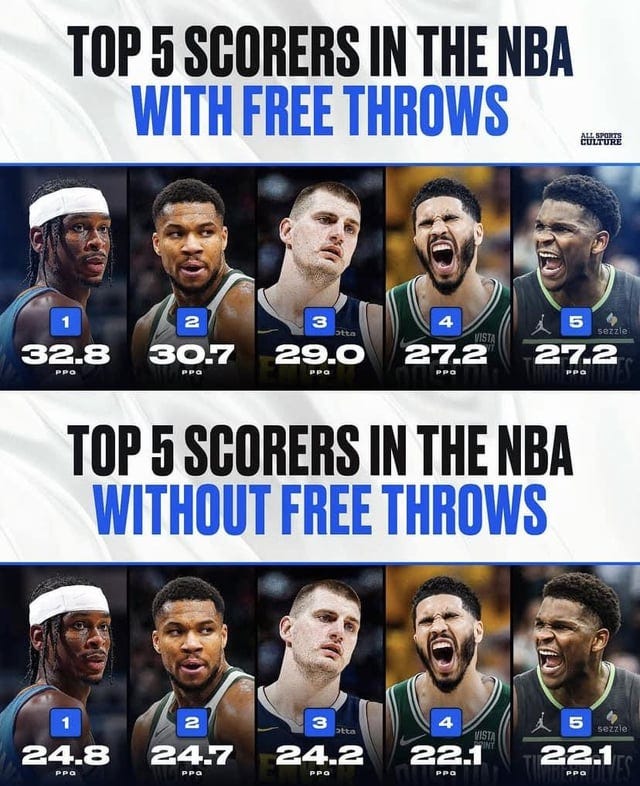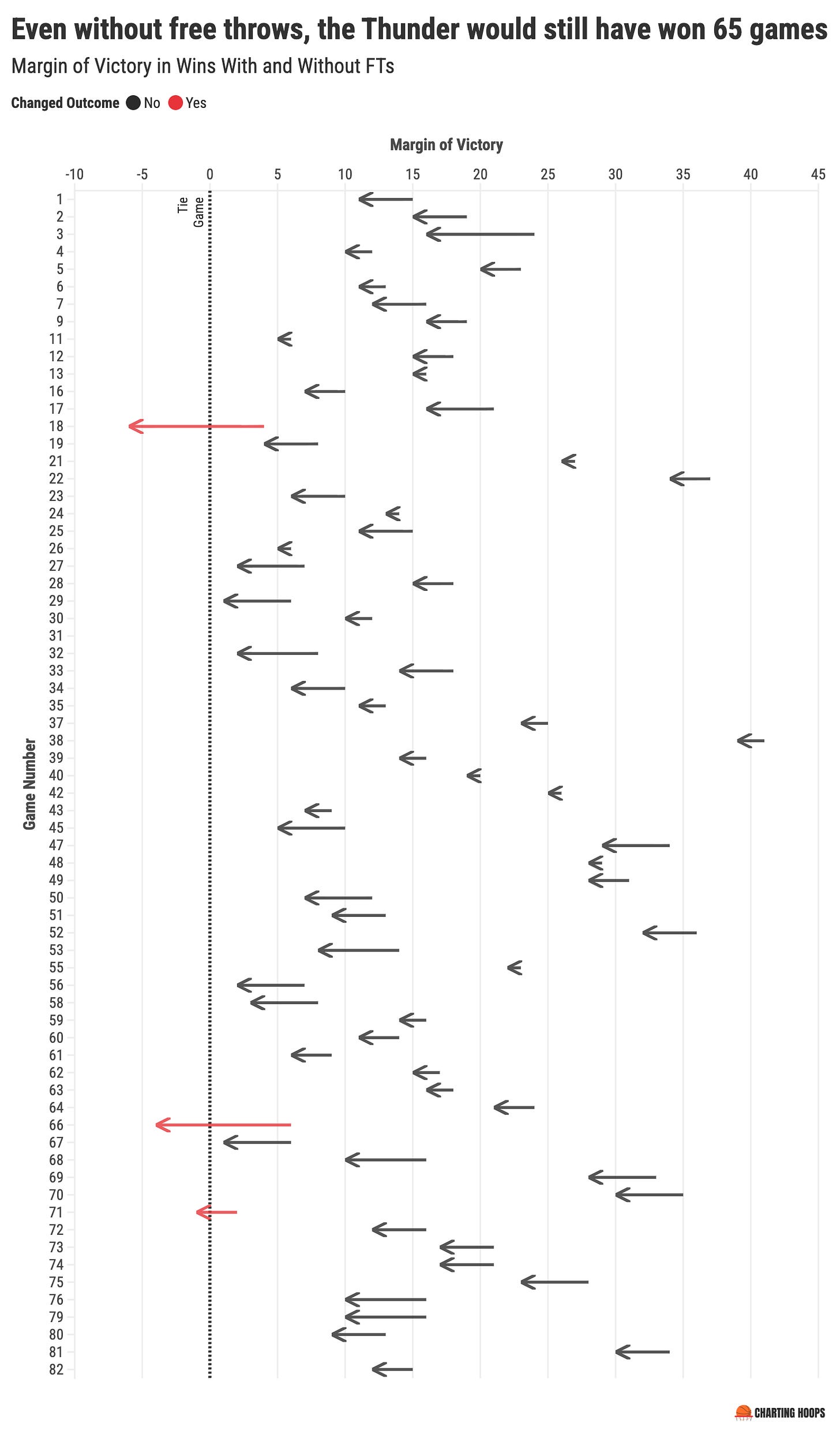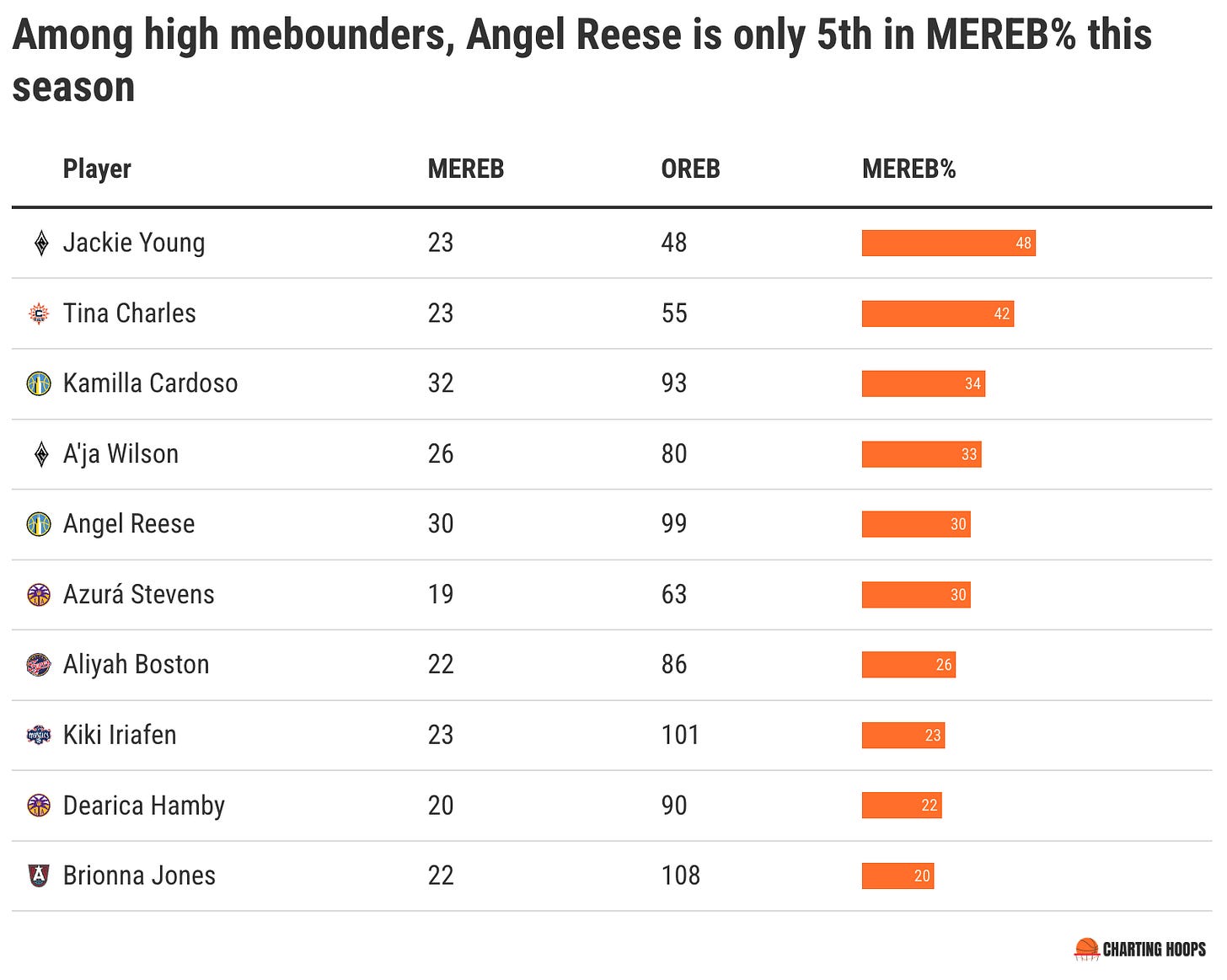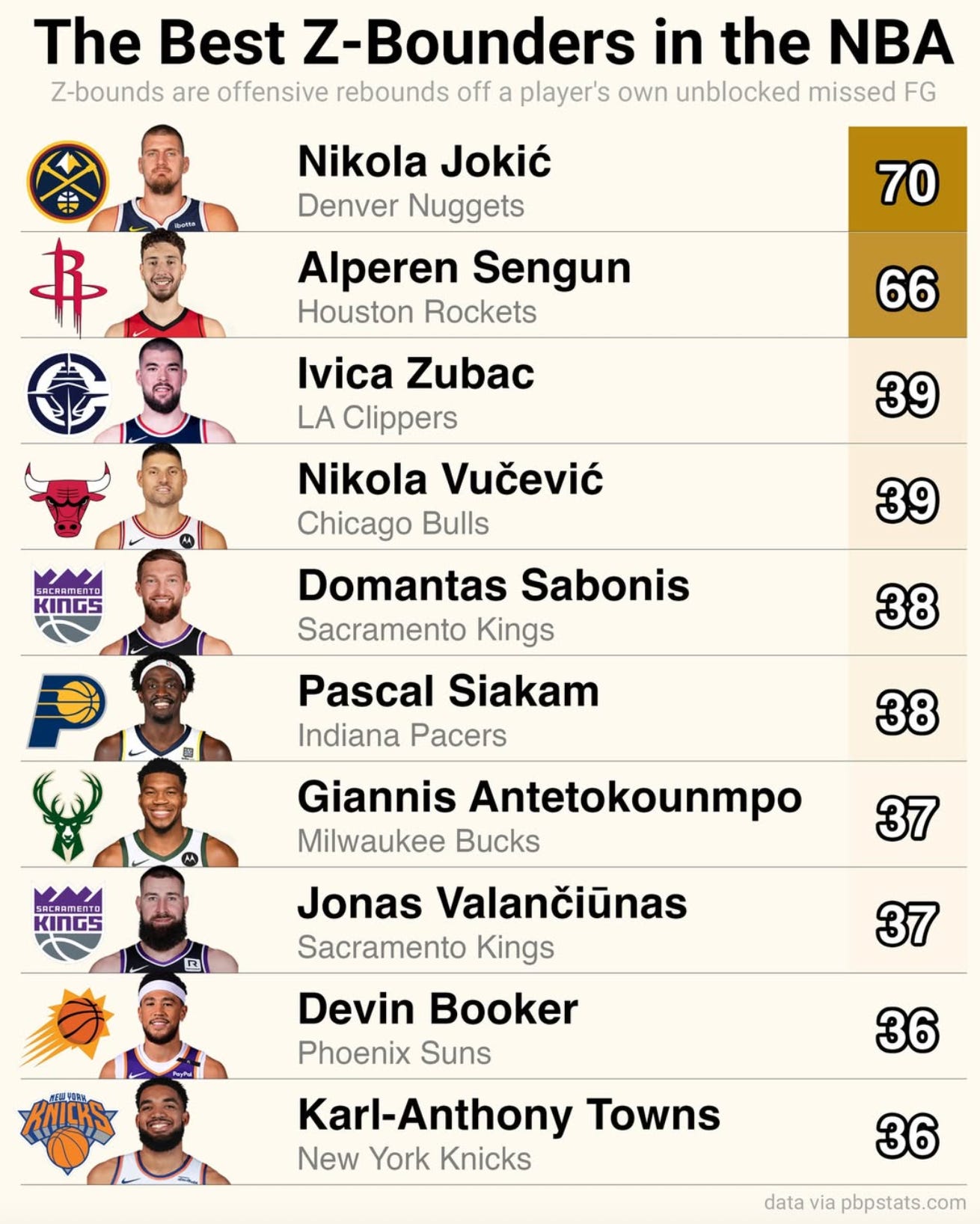Efficiently Controversial
The Impact of Free Throw Merchants & Mebounds
Stats are a good way to understand the game of basketball, but too often they’re wrapped up in easy-to-digest packages that drive a narrative but lose meaning or attachment to the game being played. Stats need to be interpreted with a proper understanding of the player, their context, and their play style. They fail when taken out of context, or lack any context to begin with.
Two stats have stood out in the public discourse around basketball in the last six months, succinctly summarized in newly coined lingo: free throw merchant and mebounds.
The terms have been throw around ad nauseam, getting everyone in the NBA and WNBA riled up. There are already some great pieces on both topics (I’ve even written about the foul baiting piece before), and even a broader foray into what it all means for the ethics of basketball. Today, I want to explore the true impact these stats are having in the WNBA.
Free Throw Merchant
The term free throw merchant, sometimes foul merchant, was coined last season to describe drive heavy guards (cough Shai Gilgeous-Alexander cough) who seemingly put more focus on drawing fouls than making field goals. Getting fouled and two free throws is by far the most efficient play in basketball, worth more points in expectation than taking a floater mid-drive. It’s the right play.
But it makes for a bad playing experience. Free throws are boring (unless there is chicken involved), the clock stoppages bring what should be a fast-paced game to a crawl, and the free points can pad the box scores of the worst offenders.
Or so the public outcry would have you think. But in the broader picture, if Shai never baited a foul, it’s likely the outcomes wouldn’t be all that different:
Taking out all free throws, Shai still led the league in scoring.
Taking out all Thunder free throws (we’ll let their opponents keep their makes), the Thunder would have lost three more games and finished 65-17, still tops in the league.
This doesn’t account for how coaches and players would have adapted to fewer foul calls, but in all likelihood the Thunder probably still win the title. Shai probably still wins MVP. Maybe it’s not pleasant to watch, but in the broader scheme of things, foul baiting didn’t change the NBA season all that much. That’s not to say it won’t in the future.
This style of play hasn’t infiltrated the WNBA to the same extent: Kelsey Plum leads all WNBA guards in free throw attempts and makes this season, but with just six attempts per 36 minutes. Shai took over nine in the same time span.
That’s despite the fact that the free throw is an even more efficient shot in the WNBA. No the line’s not closer and the rim’s not shorter. WNBA players are just ridiculously good at making their free throws.
Here’s a quick rundown of some of the most impressive foul line feats from just this season.
Rookie Monique Akoa-Makani started her career with 26 straight made free throws over her first 18 games.
Veronica Burton, who gets one-third of her points from the foul line, has made 137 of 155 attempts this season, good for 88%. A few years ago, she did what Akoa-Makani couldn’t, going a full rookie season perfect from the line: 32/32.
Kayla McBride didn’t miss a free throw for over a month, hitting 31 in a row in 11 games.
McBride’s teammate, Napheesa Collier, set a Lynx record with 53 straight across 12 games.
McBride and Collier are both shooting over 90% from the line, and that doesn’t even put them in the top two. Those spots are taken up by Sabrina Ionescu and Arike Ogunbowale, both at 93%.
This isn’t a new trend in the WNBA. In fact, in the league’s history there have been 17 player-seasons with a free throw percentage of 95% of better. The NBA, with it’s longer history and larger player pool, has had 8,200 player-seasons meeting the 125 made free throw minimum: only 5 players have made at least 95%.
Four of the best free throwing seasons belong to Becky Hammon, now the coach of the Las Vegas Aces, and the only player to ever finish a season perfect from the foul line, while taking at least one per game. Fittingly it was in her final season. They say to end on a make.
Three more belong to Elena Delle Donne. I’ve written before about EDD’s free throw prowess, including once making 114 of 117 free throws over the course of a season. I noted:
It is the highest rate ever for a player with 100+ free throws in a season.
It is ridiculous. In 117 attempts, she missed three times! Three!
It is not that ridiculous, for Elena. Over her 10-year WNBA career she made 94% of her 1,190 free throws, meaning she missed only 75.
I’m not necessarily advocating for more free throw mercenary in the WNBA, but it does seem like teams could take a bit more advantage of these “free” points.
Mebounds
While free throw merchants are mostly confined to the NBA for now, the WNBA has been responsible for the creation of “mebounds”, used to describe players (cough Angel Reese cough) who pad their rebounding stats by grabbing their own misses. As Ngwa Numfor wrote in The Athletic:
The phrase “mebounds” originated during an episode of the Club 520 podcast, a show featuring former NBA All-Star Jeff Teague and his co-hosts, DJ Wells and Brandon “Bishop B Hen” Hendricks. Hendricks jokingly referred to Reese’s rebounds as “mebounds” due to her ability to secure her own missed shots at the rim.
Reese jumped onto the WNBA scene last season, grabbing over 13 rebounds per game, including 5 off the offensive glass, both WNBA records. But many fans were quick to diminish the records, saying she only set them because she had more opportunities as the closest person to the ball after missing a shot at the rim.
It’s true that Reese is not a good finisher at the basket. She made just under 50% of her shots from three feet or closer during the 2024 season, significantly lower than other top rebounders in NBA history like Yolanda Griffith (63%), Tina Charles (64%), and Sylvia Fowles (70%). Plus as Billy Fryer pointed out, Reese, an undersized post player, had her shot blocked 76 times last season, the most in the WNBA, giving her even more chances to grab a mebound.
Let’s assume Reese was as efficient as Fowles at the rim (who, by the way, is the most efficient finisher of all time). She would have made 47 more field goals last season, and thus have 47 fewer attempts to grab a mebound. She rebounded about half of her misses, so 47 fewer chances means ~24 fewer boards, lowering her average to just 12.4 rebounds per game. That’s still a WNBA record. By a wide margin.
This season, more players are getting in on the mebound game. Kamila Cardoso, the John Hancock Building to Reese’s Willis Tower,1 leads the league in mebounds with 32. Reese is up there as well, with 30 so far, or ~1 per game, though it’s worth pointing out that only 3 out of every 10 of her offensive rebounds are of the me variety.
Overall we’re talking about, at most, one rebound per game. Generally not enough to swing a record book, or even a game outcome. Mebounds certainly haven’t helped the 9-28 Sky swing many games. Plus, a lot of these are still good, hard fought rebounds that should count!
For what it’s worth, we don’t seem to talk about NBA players this way. Owen Phillips at the f5 (RIP) was ahead of the curve in exploring mebounds in the NBA (or as he calls them Z-bounds, excluding blocked shots). Nikola Jokić was top of the Z-bound rankings with 70, or exactly one per game, right on par with Angel Reese.
Free Throw Merchants and Mebounders get a bad rap, but in all likelihood their controversial styles aren’t impacting the game all that much. Shai is still an elite scorer on the best team in the NBA. Angel is still an elite rebounder on the worst team in the WNBA. Whether they got a few more foul calls here, or own miss rebounds there isn’t changing the league picture.
They’re just doing what the analytics tells them. Stats are a good way to understand the game of basketball.
My parents are architects …








